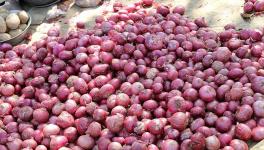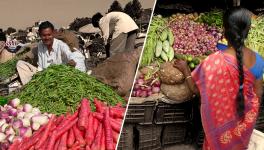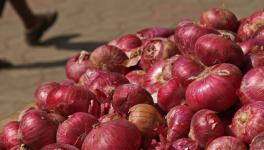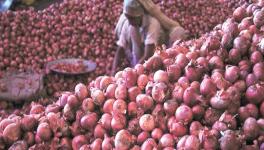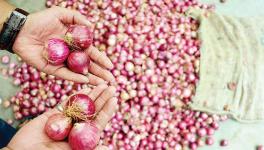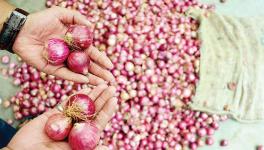Onion Prices Zooming Up to the Moon
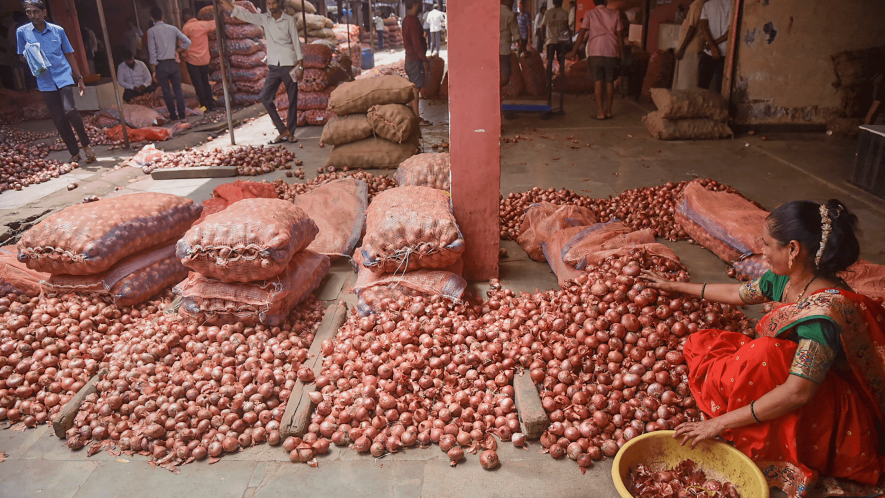
APMC Onion-Potato Market, in Navi Mumbai, Monday, Aug 21, 2023. Union Government has imposed a 40% duty on the export of onions. Image Courtesy: PTI
While onion prices have been in the backbreaking Rs.30-50 per kilogramme range in retail markets, it is remarkable – and intriguing – that wholesale prices in the four major onion producing states have risen relentlessly over the past month. These four states and their respective contribution to the country’s annual onion output are: Maharashtra (43%); Madhya Pradesh (15%); Karnataka (9%); and Gujarat (8%), according to 2021-22 data. That’s three quarters of India’s total onion production. The chart below shows average weekly wholesale prices in these four states for July- August 2023 as well as for the same period in the previous year. It is based on price data available at Agmarknet, a portal run by the agriculture ministry.
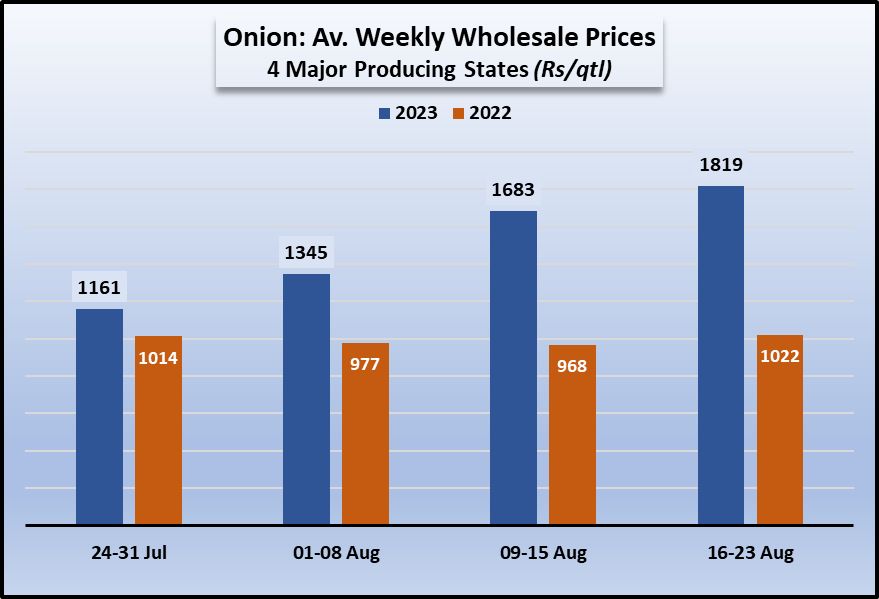
In the week July 24-31, 2023, the wholesale prices of onion were Rs.1,161 per quintal (100 kg). A month later, it had shot up by almost 60% to Rs.1,819 per quintal. This is not a seasonal phenomenon. Last year’s data for the same period (also shown in the chart above) shows that prices were more or less static in this month in 2022 – ranging between Rs.1,014 to Rs.1,022 per quintal. Compared with last year, onion prices had risen by a breathtaking nearly 80% in the August 16-23 period.
These prices are for wholesale trade in the major producing states. As is well known, big traders ultimately aggregate onion stocks from these areas and then these are either transported across the country, especially to urban centres for retail sale, or exported. This is where the big markup in prices takes place. After buying onions at, say, about Rs.20 per kg (Rs.2,000 per quintal) the big traders may sell it in Delhi for Rs.30-40 per kg and it reaches consumers at a sizzling Rs.50-60 per kg finally, as happened in August.
The production of onions in 2022-23 was 318 lakh metric tonnes (LMT) which was marginally higher than the previous year (316.98 LMT). The winter crop of onion for 2022-23 was massive leading to a glut in the wholesale markets. Prices crashed to as low as Rs.1-2 per kg in March this year, according to reports, which also narrated the misery of onion farmers, with many just ploughing the crop back into the ground rather than bear the cost of harvesting and transportation to mandis.
Exports, too, have reportedly gone up to 6.38 LMT in 2022-23 compared with last year’s 5.04 LMT. Farmers preferred to sell onions to big traders who undertake the export business because they were getting better prices compared to the crashing prices domestically.
However, all this came to an end due to bad weather – first, the untimely heat in early summer, followed by unseasonal rains. The first event led to faster ripening of onions – though not fully grown – and the second caused a drastic reduction in their shelf life because increased humidity causes fungus infestations and leads to rotting of the bulbs.
Onion production in India takes place through three crop cycles – rabi (winter), kharif (monsoon) and late kharif. The rabi crop provides up to 70% of the total production and supplies onions from late winter through the entire summer and till the monsoon. After that, the kharif harvest kicks in and provides the supply till September. Then the late kharif supports supply for initial winter months. Remember: onions cannot be stored in cold storages, and are stored in racks in the open, with good air circulation.
Normally, a lean period arises around September -October, as kharif supply runs out and the subsequent harvests are yet to come in. This is the period when prices are expected to rise.
But it is being argued that the damage to crops due to bad weather has disrupted the schedule and a shortage has arisen earlier. In fact, there are predictions that prices will hit a peak in September.
The government woke up to this imminent crisis after it had hit. First, it imposed a 40% duty on exports, which is a way of restricting exports. Then, a few days after that, on August 20, commerce minister Piyush Goyal announced that government would procure onions from farmers at the rate of Rs.2,410 per quintal. This was an attempt to ensure a slightly better price for farmers while still pulling it down from the retail high it had reached. He also declared that the procurement target would be boosted from 3 lakh metric tonnes to 5 lakh metric tonnes.
These measures may have some cooling effect on the markets but with the looming shortages, it is equally likely that onion prices will reach new highs in September.
What nobody among the policy makers and market analysts is talking about is the potential of hoarding by big traders and its devastating effect on prices. It is well known that big traders in Nashik (which is where the biggest wholesale onion markets are located) and Mumbai have a long history of cartelisation and hoarding of onions. As far back as 2012, the Competition Commission of India had highlighted this in a path breaking report. It had, among other things, pointed out “collusion” among traders and commission agents; “low price bidding”; “indulging in intentional hoarding to create artificial demand situation for realization of better prices” in Maharashtra and Karnataka onion trade.
The Competition Commission had called for strict monitoring and regulatory interventions apart from other measures. Nothing much has changed since then. In fact, the political will to regulate these so-called free markets appears to be even lower than before. So, the possibility of onion price manipulation through these long-flagged means is a distinct possibility in the current onion crisis.
Get the latest reports & analysis with people's perspective on Protests, movements & deep analytical videos, discussions of the current affairs in your Telegram app. Subscribe to NewsClick's Telegram channel & get Real-Time updates on stories, as they get published on our website.










